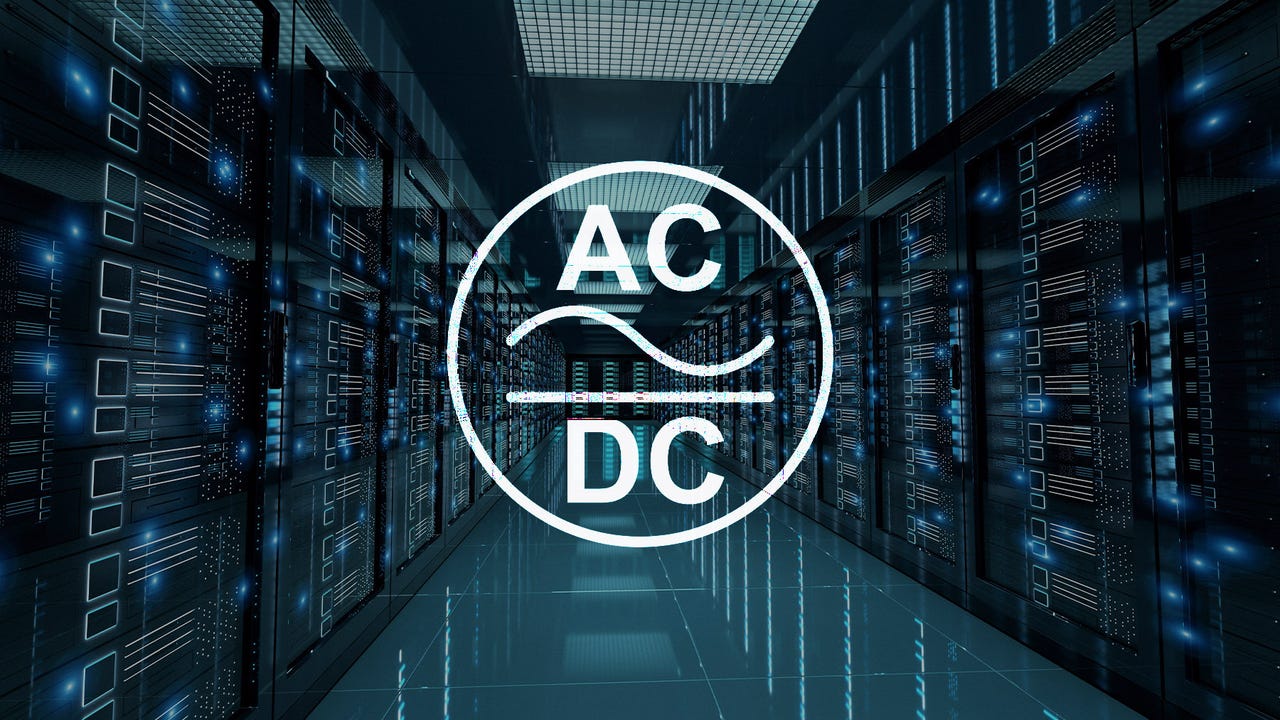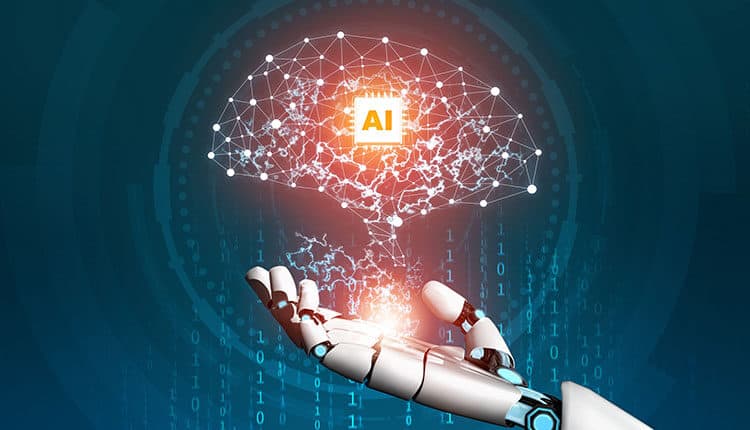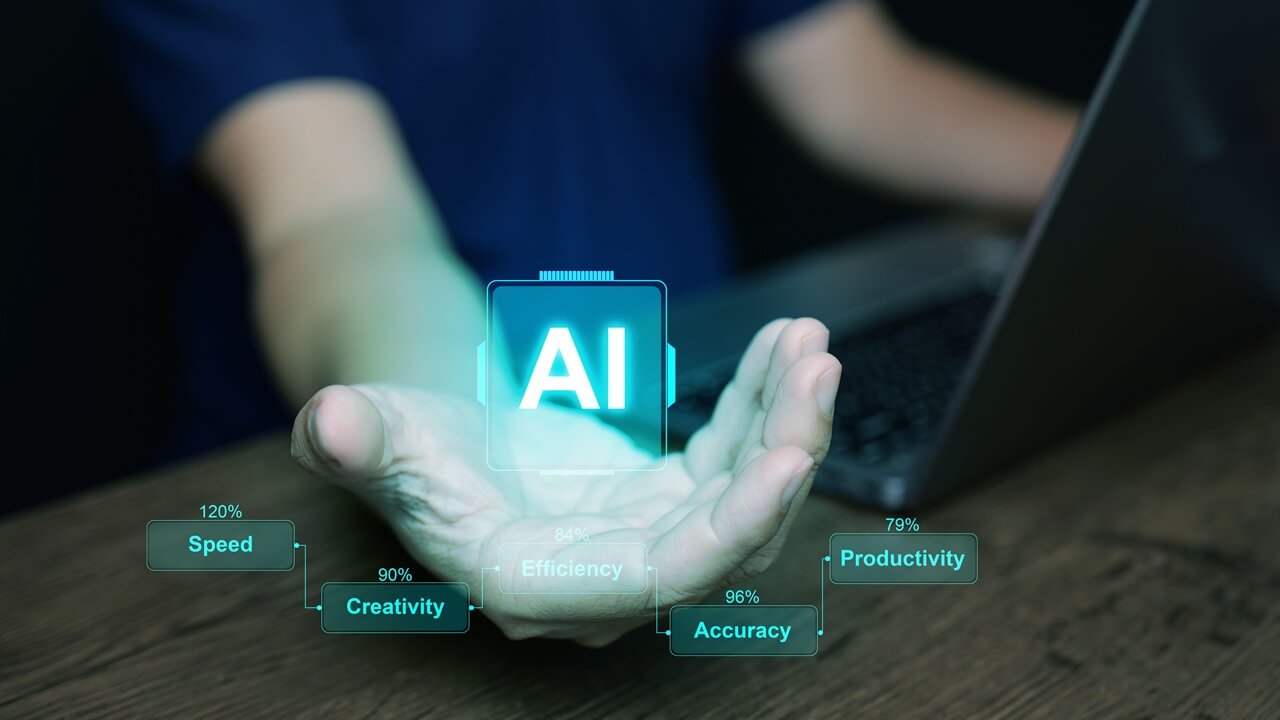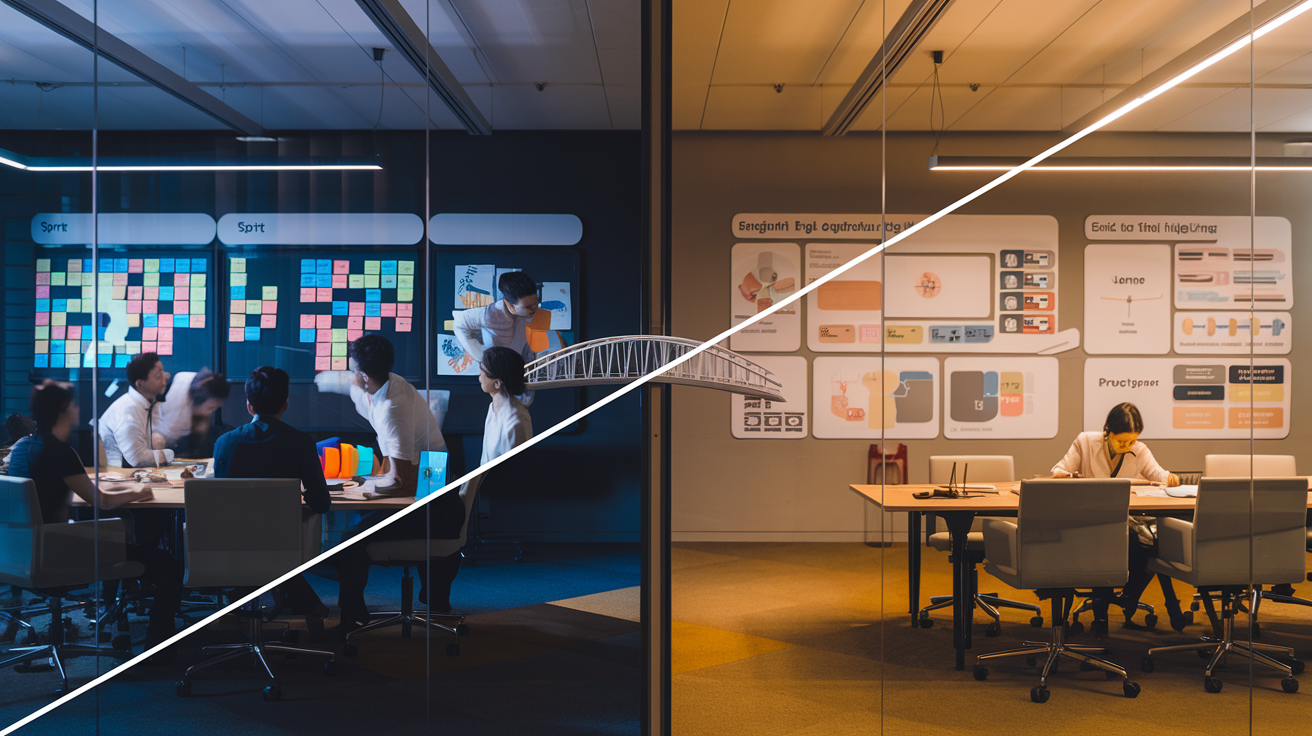Quote for the day:
"To accomplish great things, we must not only act, but also dream, not only plan, but also believe." -- Anatole France
Creating the ‘AI native’ generation: The role of digital skills in education
 Boosting AI skills has the potential to drive economic growth and productivity
and create jobs, but ambition must be matched with effective delivery. We must
ensure AI is integrated into education in a way that encourages students to
maintain critical thinking skills, skeptically assess AI outputs, and use it
responsibly and ethically. Education should also inspire future tech talent and
prepare them for the workplace. ... AI fluency is only one part of the picture.
Amid a global skills gap, we also need to capture the imaginations of young
people to work in tech. To achieve this, AI and technology education must be
accessible, meaningful, and aspirational. That requires coordinated action from
schools, industry, and government to promote the real-world impact of digital
skills and create clearer, more inspiring pathways into tech careers and expose
students how AI is applied in various professions. Early exposure to AI can do
far more than build fluency, it can spark curiosity, confidence and career
ambition towards high-value sectors like data science, engineering and
cybersecurity—areas where the UK must lead. ... Students who learn how to use AI
now will build the competencies that industries want and need for years to come.
But this will form the first stage of a broader AI learning arc where learning
and upskilling become a lifelong mindset, not a single milestone.
Boosting AI skills has the potential to drive economic growth and productivity
and create jobs, but ambition must be matched with effective delivery. We must
ensure AI is integrated into education in a way that encourages students to
maintain critical thinking skills, skeptically assess AI outputs, and use it
responsibly and ethically. Education should also inspire future tech talent and
prepare them for the workplace. ... AI fluency is only one part of the picture.
Amid a global skills gap, we also need to capture the imaginations of young
people to work in tech. To achieve this, AI and technology education must be
accessible, meaningful, and aspirational. That requires coordinated action from
schools, industry, and government to promote the real-world impact of digital
skills and create clearer, more inspiring pathways into tech careers and expose
students how AI is applied in various professions. Early exposure to AI can do
far more than build fluency, it can spark curiosity, confidence and career
ambition towards high-value sectors like data science, engineering and
cybersecurity—areas where the UK must lead. ... Students who learn how to use AI
now will build the competencies that industries want and need for years to come.
But this will form the first stage of a broader AI learning arc where learning
and upskilling become a lifelong mindset, not a single milestone.
What is the State of SIEM?
 In addition to high deployment costs, many organizations grapple with
implementing SIEM. A primary challenge is SIEM configuration -- given that the
average organization has more than 100 different data sources that must plug
into the platform, according to an IDC report. It can be daunting for network
staff to do the following when deploying SIEM: Choose which data sources to
integrate; Set up SIEM correlation rules that define what will be classified
as a security event; and Determine the alert thresholds for specific data and
activities. It's equally challenging to manage the information and alerts a
SIEM platform issues. If you fine-tune too much, the result might be false
positives as the system triggers alarms about events that aren't actually
threats. This is a time-stealer for network techs and can lead to staff
fatigue and frustration. In contrast, if the calibration is too liberal,
organizations run the risk of overlooking something that could be vital.
Network staff must also coordinate with other areas of IT and the company. For
example, what if data safekeeping and compliance regulations change? Does this
change SIEM rule sets? What if the IT applications group rolls out new systems
that must be attached to SIEM? Can the legal department or auditors tell you
how long to store and retain data for eDiscovery or for disaster backup and
recovery? And which data noise can you discard as waste?
In addition to high deployment costs, many organizations grapple with
implementing SIEM. A primary challenge is SIEM configuration -- given that the
average organization has more than 100 different data sources that must plug
into the platform, according to an IDC report. It can be daunting for network
staff to do the following when deploying SIEM: Choose which data sources to
integrate; Set up SIEM correlation rules that define what will be classified
as a security event; and Determine the alert thresholds for specific data and
activities. It's equally challenging to manage the information and alerts a
SIEM platform issues. If you fine-tune too much, the result might be false
positives as the system triggers alarms about events that aren't actually
threats. This is a time-stealer for network techs and can lead to staff
fatigue and frustration. In contrast, if the calibration is too liberal,
organizations run the risk of overlooking something that could be vital.
Network staff must also coordinate with other areas of IT and the company. For
example, what if data safekeeping and compliance regulations change? Does this
change SIEM rule sets? What if the IT applications group rolls out new systems
that must be attached to SIEM? Can the legal department or auditors tell you
how long to store and retain data for eDiscovery or for disaster backup and
recovery? And which data noise can you discard as waste?AI Data Centers: A Popular Term That’s Hard to Define
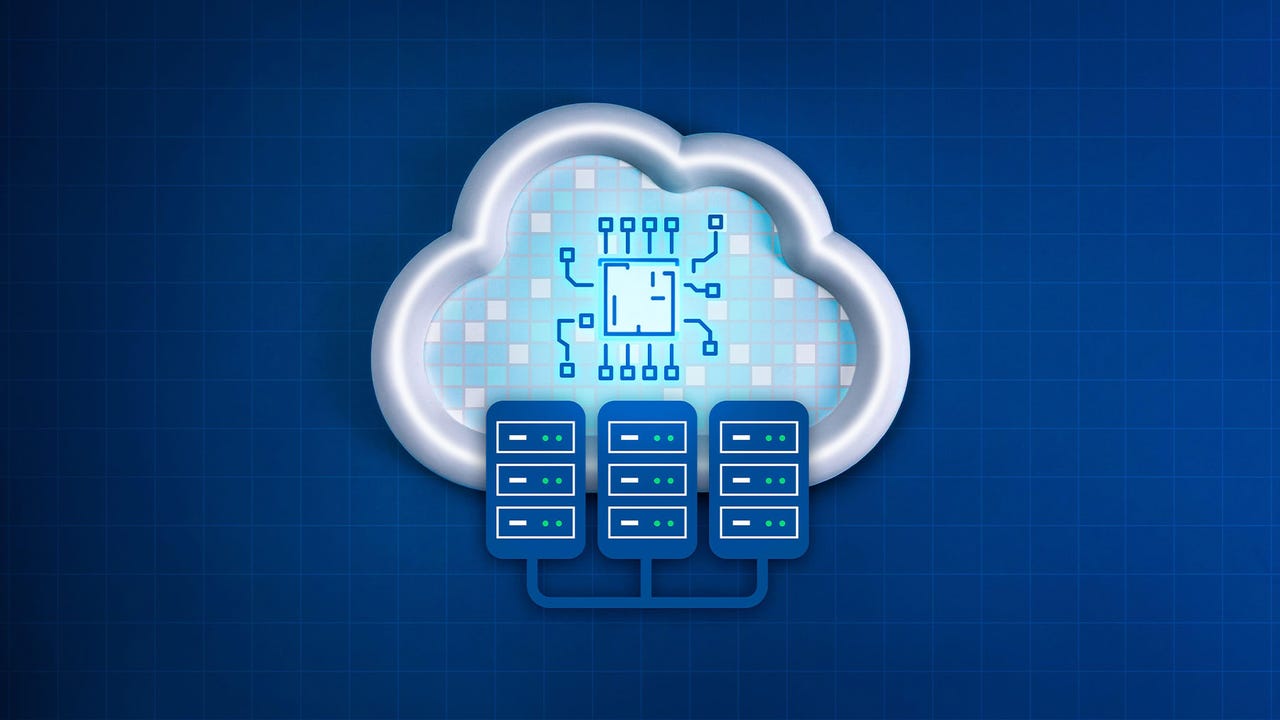 The tricky thing about trying to define AI data centers based on
characteristics like those described above is that none of those features is
unique to AI data centers. For example, hyperscale data centers – meaning very
large facilities capable of accommodating more than a hundred thousand servers
in some cases – existed before modern AI debuted. AI has made large-scale data
centers more important because AI workloads require vast infrastructures, but
it’s not as if no one was building large data centers before AI rose to
prominence. Likewise, it has long been possible to deploy GPU-equipped servers
in data centers. ... Likewise, advanced cooling systems and innovative
approaches to data center power management are not unique to the age of
generative AI. They, too, predated AI data centers. ... Arguably, an AI data
center is ultimately defined by what it does (hosting AI workloads) more than
by how it does it. So, before getting hung up on the idea that AI requires
investment in a new generation of data centers, it’s perhaps healthier to
think about how to leverage the data centers already in existence to support
AI workloads. That perspective will help the industry avoid the risk of
overinvesting in new data centers designed specifically for AI – and as a
bonus, it may save money by allowing businesses to repurpose the data centers
they already own to meet their AI needs as well.
The tricky thing about trying to define AI data centers based on
characteristics like those described above is that none of those features is
unique to AI data centers. For example, hyperscale data centers – meaning very
large facilities capable of accommodating more than a hundred thousand servers
in some cases – existed before modern AI debuted. AI has made large-scale data
centers more important because AI workloads require vast infrastructures, but
it’s not as if no one was building large data centers before AI rose to
prominence. Likewise, it has long been possible to deploy GPU-equipped servers
in data centers. ... Likewise, advanced cooling systems and innovative
approaches to data center power management are not unique to the age of
generative AI. They, too, predated AI data centers. ... Arguably, an AI data
center is ultimately defined by what it does (hosting AI workloads) more than
by how it does it. So, before getting hung up on the idea that AI requires
investment in a new generation of data centers, it’s perhaps healthier to
think about how to leverage the data centers already in existence to support
AI workloads. That perspective will help the industry avoid the risk of
overinvesting in new data centers designed specifically for AI – and as a
bonus, it may save money by allowing businesses to repurpose the data centers
they already own to meet their AI needs as well.Password Managers Vulnerable to Data Theft via Clickjacking
 Tóth showed how an attacker can use DOM-based extension clickjacking and the
autofill functionality of password managers to exfiltrate sensitive data
stored by these applications, including personal data, usernames and
passwords, passkeys, and payment card information. The attacks demonstrated by
the researcher require 0-5 clicks from the victim, with a majority requiring
only one click on a harmless-looking element on the page. The single-click
attacks often involved exploitation of XSS or other vulnerabilities. DOM, or
Document Object Model, is an object tree created by the browser when it loads
an HTML or XML web page. ... Tóth’s attack involves a malicious script that
manipulates user interface elements injected by browser extensions into the
DOM. “The principle is that a browser extension injects elements into the DOM,
which an attacker can then make invisible using JavaScript,” he explained.
According to the researcher, some of the vendors have patched the
vulnerabilities, but fixes have not been released for Bitwarden, 1Password,
iCloud Passwords, Enpass, LastPass, and LogMeOnce. SecurityWeek has reached
out to these companies for comment. Bitwarden said a fix for the vulnerability
is being rolled out this week with version 2025.8.0. LogMeOnce said it’s aware
of the findings and its team is actively working on resolving the issue
through a security update.
Tóth showed how an attacker can use DOM-based extension clickjacking and the
autofill functionality of password managers to exfiltrate sensitive data
stored by these applications, including personal data, usernames and
passwords, passkeys, and payment card information. The attacks demonstrated by
the researcher require 0-5 clicks from the victim, with a majority requiring
only one click on a harmless-looking element on the page. The single-click
attacks often involved exploitation of XSS or other vulnerabilities. DOM, or
Document Object Model, is an object tree created by the browser when it loads
an HTML or XML web page. ... Tóth’s attack involves a malicious script that
manipulates user interface elements injected by browser extensions into the
DOM. “The principle is that a browser extension injects elements into the DOM,
which an attacker can then make invisible using JavaScript,” he explained.
According to the researcher, some of the vendors have patched the
vulnerabilities, but fixes have not been released for Bitwarden, 1Password,
iCloud Passwords, Enpass, LastPass, and LogMeOnce. SecurityWeek has reached
out to these companies for comment. Bitwarden said a fix for the vulnerability
is being rolled out this week with version 2025.8.0. LogMeOnce said it’s aware
of the findings and its team is actively working on resolving the issue
through a security update.Iskraemeco India CEO: ERP, AI, and the future of utility leadership
We see a clear convergence ahead, where ERP systems like Infor’s will increasingly integrate with edge AI, embedded IoT, and low-code automation to create intelligent, responsive operations. This is especially relevant in utility scenarios where time-sensitive data must drive immediate action. For instance, our smart kits – equipped with sensor technology – are being designed to detect outages in real time and pinpoint exact failure points, such as which pole needs service during a natural disaster. This type of capability, powered by embedded IoT and edge computing, enables decisions to be made closer to the source, reducing downtime and response lag. ... One of the most important lessons we've learned is that success in complex ERP deployments is less about customisation and more about alignment, across leadership, teams, and technology. In our case, resisting the urge to modify the system and instead adopting Infor’s best-practice frameworks was key. It allowed us to stay focused, move faster, and ensure long-term stability across all modules. In a multi-stakeholder environment – where regulatory bodies, internal departments, and technology partners are all involved – clarity of direction from leadership made all the difference. When the expectation is clear that we align to the system, and not the other way around, it simplifies everything from compliance to team onboarding.Experts Concerned by Signs of AI Bubble
 "There's a huge boom in AI — some people are scrambling to get exposure at any
cost, while others are sounding the alarm that this will end in tears," Kai
Wu, founder and chief investment officer of Sparkline Capital, told the Wall
Street Journal last year. There are even doubters inside the industry. In
July, recently ousted CEO of AI company Stability AI Emad Mostaque told
banking analysts that "I think this will be the biggest bubble of all time."
"I call it the 'dot AI’ bubble, and it hasn’t even started yet," he added at
the time. Just last week, Jeffrey Gundlach, billionaire CEO of DoubleLine
Capital, also compared the AI craze to the dot com bubble. "This feels a lot
like 1999," he said during an X Spaces broadcast last week, as quoted by
Business Insider. "My impression is that investors are presently enjoying the
double-top of the most extreme speculative bubble in US financial history,"
Hussman Investment Trust president John Hussman wrote in a research note. In
short, with so many people ringing the alarm bells, there could well be cause
for concern. And the consequences of an AI bubble bursting could be
devastating. ... While Nvidia would survive such a debacle, the "ones that are
likely to bear the brunt of the correction are the providers of generative AI
services who are raising money on the promise of selling their services for
$20/user/month," he argued.
"There's a huge boom in AI — some people are scrambling to get exposure at any
cost, while others are sounding the alarm that this will end in tears," Kai
Wu, founder and chief investment officer of Sparkline Capital, told the Wall
Street Journal last year. There are even doubters inside the industry. In
July, recently ousted CEO of AI company Stability AI Emad Mostaque told
banking analysts that "I think this will be the biggest bubble of all time."
"I call it the 'dot AI’ bubble, and it hasn’t even started yet," he added at
the time. Just last week, Jeffrey Gundlach, billionaire CEO of DoubleLine
Capital, also compared the AI craze to the dot com bubble. "This feels a lot
like 1999," he said during an X Spaces broadcast last week, as quoted by
Business Insider. "My impression is that investors are presently enjoying the
double-top of the most extreme speculative bubble in US financial history,"
Hussman Investment Trust president John Hussman wrote in a research note. In
short, with so many people ringing the alarm bells, there could well be cause
for concern. And the consequences of an AI bubble bursting could be
devastating. ... While Nvidia would survive such a debacle, the "ones that are
likely to bear the brunt of the correction are the providers of generative AI
services who are raising money on the promise of selling their services for
$20/user/month," he argued.OpenCUA’s open source computer-use agents rival proprietary models from OpenAI and Anthropic
 Computer-use agents are designed to autonomously complete tasks on a computer,
from navigating websites to operating complex software. They can also help
automate workflows in the enterprise. However, the most capable CUA systems
are proprietary, with critical details about their training data,
architectures, and development processes kept private. “As the lack of
transparency limits technical advancements and raises safety concerns, the
research community needs truly open CUA frameworks to study their
capabilities, limitations, and risks,” the researchers state in their paper.
... The tool streamlines data collection by running in the background on an
annotator’s personal computer, capturing screen videos, mouse and keyboard
inputs, and the underlying accessibility tree, which provides structured
information about on-screen elements. ... The key insight was to augment
these trajectories with chain-of-thought (CoT) reasoning. This process
generates a detailed “inner monologue” for each action, which includes
planning, memory, and reflection. This structured reasoning is organized into
three levels: a high-level observation of the screen, reflective thoughts that
analyze the situation and plan the next steps, and finally, the concise,
executable action. This approach helps the agent develop a deeper
understanding of the tasks.
Computer-use agents are designed to autonomously complete tasks on a computer,
from navigating websites to operating complex software. They can also help
automate workflows in the enterprise. However, the most capable CUA systems
are proprietary, with critical details about their training data,
architectures, and development processes kept private. “As the lack of
transparency limits technical advancements and raises safety concerns, the
research community needs truly open CUA frameworks to study their
capabilities, limitations, and risks,” the researchers state in their paper.
... The tool streamlines data collection by running in the background on an
annotator’s personal computer, capturing screen videos, mouse and keyboard
inputs, and the underlying accessibility tree, which provides structured
information about on-screen elements. ... The key insight was to augment
these trajectories with chain-of-thought (CoT) reasoning. This process
generates a detailed “inner monologue” for each action, which includes
planning, memory, and reflection. This structured reasoning is organized into
three levels: a high-level observation of the screen, reflective thoughts that
analyze the situation and plan the next steps, and finally, the concise,
executable action. This approach helps the agent develop a deeper
understanding of the tasks.How to remember everything
 MyMind is a clutter-free bookmarking and knowledge-capture app without folders
or manual content organization.There are no templates, manual customizations,
or collaboration tools. Instead, MyMind recognizes and formats the content
type elegantly. For example, songs, movies, books, and recipes are displayed
differently based on MyMind’s detection, regardless of the source, as are
pictures and videos. MyMind uses AI to auto-tag everything and allows custom
tags. Every word, including those in pictures, is indexed. You can take
pictures of information, upload them to MyMind, and find them later by
searching a word or two found in the picture. Copying a sentence or paragraph
from an article will display the quote with a source link. Every data chunk is
captured in a “card.” ... Alongside AI-enabled lifelogging tools like MyMind,
we’re also entering an era of lifelogging hardware devices. One promising
direction comes from a startup called Brilliant Labs. Its new $299 Halo
glasses, available for pre-order and shipping in November, are lightweight AI
glasses. The glasses have a long list of features — bone conduction sound, a
camera, light weight, etc. — but the lifelogging enabler is an “agentic
memory” system called Narrative. It captures information automatically from
the camera and microphones and places it into a personal knowledge base.
MyMind is a clutter-free bookmarking and knowledge-capture app without folders
or manual content organization.There are no templates, manual customizations,
or collaboration tools. Instead, MyMind recognizes and formats the content
type elegantly. For example, songs, movies, books, and recipes are displayed
differently based on MyMind’s detection, regardless of the source, as are
pictures and videos. MyMind uses AI to auto-tag everything and allows custom
tags. Every word, including those in pictures, is indexed. You can take
pictures of information, upload them to MyMind, and find them later by
searching a word or two found in the picture. Copying a sentence or paragraph
from an article will display the quote with a source link. Every data chunk is
captured in a “card.” ... Alongside AI-enabled lifelogging tools like MyMind,
we’re also entering an era of lifelogging hardware devices. One promising
direction comes from a startup called Brilliant Labs. Its new $299 Halo
glasses, available for pre-order and shipping in November, are lightweight AI
glasses. The glasses have a long list of features — bone conduction sound, a
camera, light weight, etc. — but the lifelogging enabler is an “agentic
memory” system called Narrative. It captures information automatically from
the camera and microphones and places it into a personal knowledge base.
From APIs to Digital Twins: Warehouse Integration Strategies for Smarter Supply Chains
 Digital twins create virtual replicas of warehouses and supply chains for
monitoring and testing. A digital twin ingests live data from IoT sensors,
machines, and transportation feeds to simulate how changes affect outcomes.
For instance, GE’s “Digital Wind Farm” project feeds sensor data from each
turbine into a cloud model, suggesting performance tweaks that boost energy
output by ~20% (worth ~$100M more revenue per turbine). In warehousing,
digital twins can model workflows (layout changes, staffing shifts, equipment
usage) to identify bottlenecks or test improvements before physical changes.
Paired with AI, these twins become predictive and prescriptive: companies can
run thousands of what-if scenarios (like a port strike or demand surge) and
adjust plans accordingly. ... Today’s warehouses are not just storage sheds;
they are smart, interconnected nodes in the supply chain. Leveraging IIoT
sensors, cloud APIs, AI analytics, robotics, and digital twins transforms
logistics into a competitive advantage. Integrated systems reduce manual
handoffs and errors: for example, automated picking and instant carrier
booking can shorten fulfillment cycles from days to hours. Industry data bear
this out, deploying these technologies can improve on-time delivery by ~20%
and significantly lower operating costs.
Digital twins create virtual replicas of warehouses and supply chains for
monitoring and testing. A digital twin ingests live data from IoT sensors,
machines, and transportation feeds to simulate how changes affect outcomes.
For instance, GE’s “Digital Wind Farm” project feeds sensor data from each
turbine into a cloud model, suggesting performance tweaks that boost energy
output by ~20% (worth ~$100M more revenue per turbine). In warehousing,
digital twins can model workflows (layout changes, staffing shifts, equipment
usage) to identify bottlenecks or test improvements before physical changes.
Paired with AI, these twins become predictive and prescriptive: companies can
run thousands of what-if scenarios (like a port strike or demand surge) and
adjust plans accordingly. ... Today’s warehouses are not just storage sheds;
they are smart, interconnected nodes in the supply chain. Leveraging IIoT
sensors, cloud APIs, AI analytics, robotics, and digital twins transforms
logistics into a competitive advantage. Integrated systems reduce manual
handoffs and errors: for example, automated picking and instant carrier
booking can shorten fulfillment cycles from days to hours. Industry data bear
this out, deploying these technologies can improve on-time delivery by ~20%
and significantly lower operating costs.
Enterprise Software Spending Surges Despite AI ROI Shortfalls
 AI capabilities increasingly drive software purchasing decisions. However,
many organizations struggle with the gap between AI promise and practical ROI
delivery. The disconnect stems from fundamental challenges in data
accessibility and contextual understanding. Current AI implementations face
significant obstacles in accessing the full spectrum of contextual data
required for complex decision-making. "In complex use cases, where the
exponential benefits of AI reside, AI still feels forced and contrived when it
doesn't have the same amount and depth of contextual data required to read a
situation," Kirkpatrick explained. Effective AI implementation requires
comprehensive data infrastructure investments. Organizations must ensure AI
models can access approved data sources while maintaining proper guardrails.
Many IT departments are still working to achieve this balance. The challenge
intensifies in environments where AI needs to integrate across multiple
platforms and data sources. Well-trained humans often outperform AI on complex
tasks because their experience allows them to read multiple factors and adjust
contextually. "For AI to mimic that experience, it requires a wide range of
data that can address factors across a wide range of dimensions," Kirkpatrick
said. "That requires significant investment in data to ensure the AI has the
information it needs at the right time, with the proper context, to function
seamlessly, effectively, and efficiently."
AI capabilities increasingly drive software purchasing decisions. However,
many organizations struggle with the gap between AI promise and practical ROI
delivery. The disconnect stems from fundamental challenges in data
accessibility and contextual understanding. Current AI implementations face
significant obstacles in accessing the full spectrum of contextual data
required for complex decision-making. "In complex use cases, where the
exponential benefits of AI reside, AI still feels forced and contrived when it
doesn't have the same amount and depth of contextual data required to read a
situation," Kirkpatrick explained. Effective AI implementation requires
comprehensive data infrastructure investments. Organizations must ensure AI
models can access approved data sources while maintaining proper guardrails.
Many IT departments are still working to achieve this balance. The challenge
intensifies in environments where AI needs to integrate across multiple
platforms and data sources. Well-trained humans often outperform AI on complex
tasks because their experience allows them to read multiple factors and adjust
contextually. "For AI to mimic that experience, it requires a wide range of
data that can address factors across a wide range of dimensions," Kirkpatrick
said. "That requires significant investment in data to ensure the AI has the
information it needs at the right time, with the proper context, to function
seamlessly, effectively, and efficiently."







/articles/ai-infrastructure-aggregating-agentic-traffic/en/smallimage/ai-infrastructure-aggregating-agentic-traffic-thumbnail-1755682463373.jpg)





